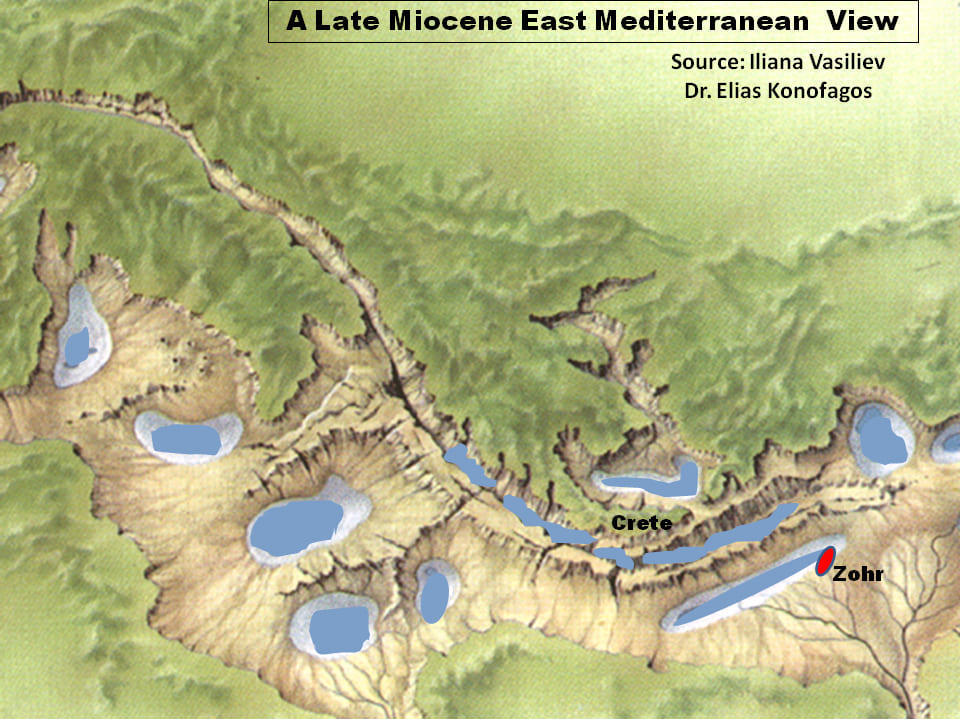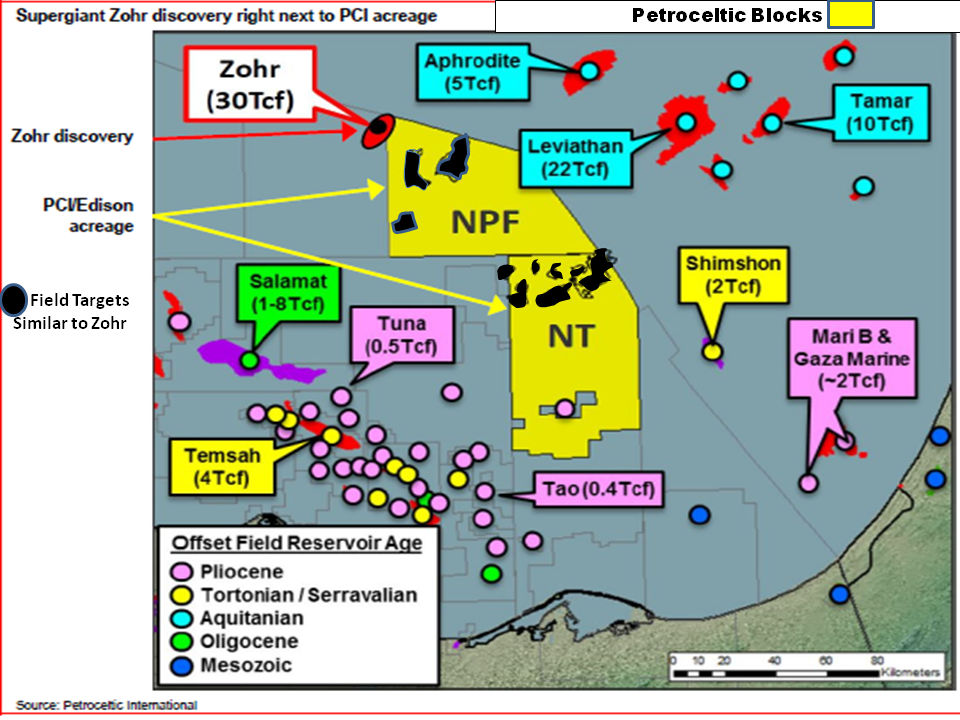21677 - The researches regarding giant reserves southeast of Crete are multiplied. (with E. Conophagos and A. Foscolos)
E. Conophagos, N. Lygeros, A. Foscolos
Translated from the Greek by Athena Kehagias
While in our homeland there are still systematic discrediting statements, in regards to the potential of the existence of Greek underwater reserves, coming from various irrelevant-unrelated sources, who most propably have other interests, we observe that southeast of Crete, there is a continuation of an investment cosmogony in regards to the detection and identification of new giant natural gas reserves, but even hypergigantic ones.
As we’ve already mentioned, the use of EMI’s new geological research model, based on Venezuela’s Perla reserve, for the detection of biogenic gas reserves, opens the path to new deposits, which are expected to be discovered in paleo-lagoon coastal positions of the Miocene epoch.
At those paleogeographic fields,karst limestones were created, which have the ability to store vast amounts of biogenic gas.
The biogenic gas was generated in an extremely salty environment (see fig. re: paleo-lagoons) by the decomposition of extremely high concentrations of organic matter, during the Mediterranean evaporation in the Messinian era.
Based on the above mentioned factor, the French company TOTAL stated only a few days ago, that it has an interest to intensively pursue its research efforts for reserve locations in Cyprus, while there were assumptions just three months prior, that it was going to depart.
But it’s not regarding just the company TOTAL, as there’s a vast number of new companies who are getting prepared to try to investigate the area south of Cyprus for new targets based on EMI’s new model.
More specifically, the Irish Petroceltic oil company, which is operating in the Gulf of Patras with the Greek Petroleum and Edison, co operates in two marine plots next to ENI’s Zohr discovery.
The new reserve targets in the vast region seem to be important in volume of natural gas reserves, even if their spread is relatively limited.
We should note here that, the Aphrodite reserve, with an extent of 100 square kilometers km2 , has stocks which amount to 140 billion cubic meters (m3 ) of natural gas, whereas the Zohr reserve, with a similar area extension,ie,100 km2 probably obtains 5 times greater stocks, ie. 1.7 Tris m3 of natural gas.
It is interesting to note that ENI’s reserve Perla in Venezuela, with an area spread of 33 km2, it has been proved that it contains stocks of about 0.5 Tris m3 of natural gas. This finding is reviving hopes for significant stocks South of Crete, not only because paleogeographically there were lagoons there, but because as a highly seismic region, it is not expected for target reserves with a very large surface to be located there.


